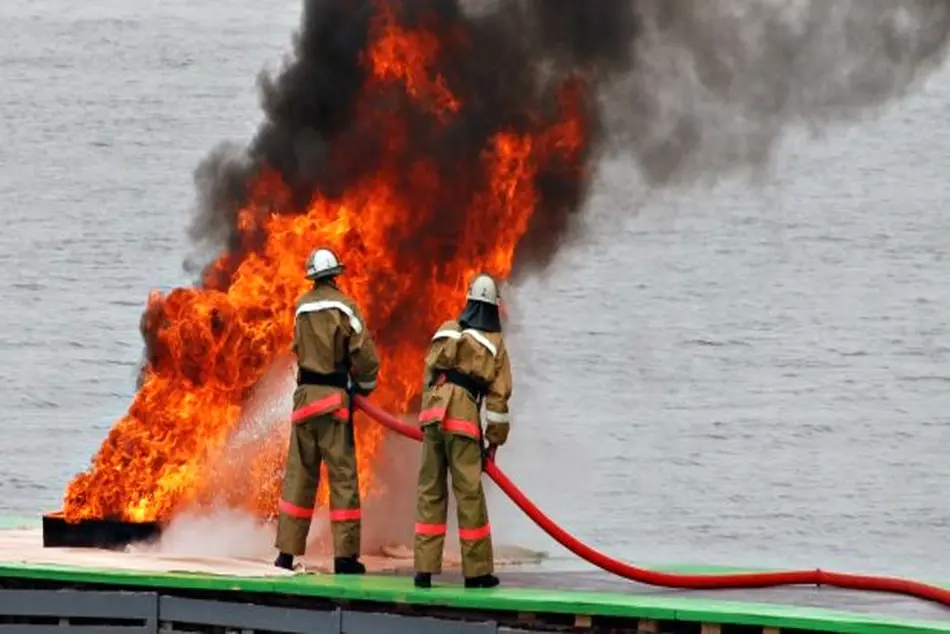Appropriate use of emergency systems vital to safe shipping

In the latest issue of its Safety Digest, UK MAIB describes how a fire was developed in a ship while it was in a passage. UK MAIB provides a description of the incident and presents the lessons learned from this incident to prevent similar incidents in the future.
The incident
A ship was on passage when a fire developed in the engine room. The ship was approximately 20 miles from its destination and in a relatively busy shipping area.
The ship’s propulsion and generating plant consisted of a main engine coupled to a shaft alternator, two auxiliary alternators and an emergency generator. At the time of the fire, the ship was running with the shaft alternator providing electrical power.
A fire alarm sounded, which was quickly followed by the ship losing electrical power and blacking out. The standby generator then cut in, restoring power to the ship. The chief engineer investigated and reported to the master that there was a fire and a large volume of smoke in the engine room. The master decided to evacuate the engine room, shut down ventilation and operate the fixed CO2 fire extinguishing system. As the ship was in a busy traffic area he decided to keep the generator and main engine running at slow speed in order to maintain the ship’s course.
Approximately 50 minutes after the CO2 system was activated, ventilation of the space commenced and a ship’s fire-fighting team, wearing breathing apparatus, entered the engine room to investigate. The fire-fighting team found that the fire had not been fully extinguished, so used fire hoses and dry powder extinguishers to fight it.
On arrival in port, the local area fire and rescue service inspected the engine room and confirmed that the fire had been extinguished. It was noted that the seat of the fire was a rubber coupling between the main engine and the shaft alternator. There was very little collateral damage and the ship was able to proceed to its next port following minor repairs and cleaning.
The master’s decision to shut down the engine room and use the fixed fire extinguishing system was prudent. However, continuing on passage, even at slow speed, compromised the effectiveness of the CO2 system.
CO2 smothering requires 40% by volume to be effective. Fixed fire extinguishing systems are designed to provide sufficient fire-fighting medium to achieve the required coverage. However, this is based on a complete shutdown of the engine room.
The main engine and the auxiliary engines took their combustion air from within the engine room. Therefore, by leaving these engines running there was a significant risk of evacuating the CO2 through the engines and reducing the fixed fire extinguishing system’s effectiveness. A secondary concern is that the concentration of CO2 entering the engine intakes could have interfered with the combustion process and, consequently, negated the aim of maintaining propulsion.
Lessons learned:
1. Senior officers in decision-making positions must be fully aware of emergency systems and how to use them effectively. Inappropriate use reduces their effectiveness and can endanger both the ship and its crew.
2. The safety management system should provide decision-support processes to assist during an emergency situation. The International Chamber of Shipping (ICS) Bridge Procedures Guide 5th edition gives examples of considerations in the event of an engine room fire (Annex 3 section C7) and main engine failure (C1).
3. Other crew members (in this case the chief engineer in particular) should feel empowered to challenge inappropriate decisions. The ICS Bridge Procedures Guide highlights ‘challenge and response’ as being an effective leadership approach. This concept should be expanded beyond the bridge team to encompass all members of the vessel’s management team.
4. Comprehensive monitoring of the compartment boundaries is essential to ensure that re-entry is not made until the fire has been extinguished. An entry made with residual heat can result in re-ignition and, in extreme cases, a backdraught.
